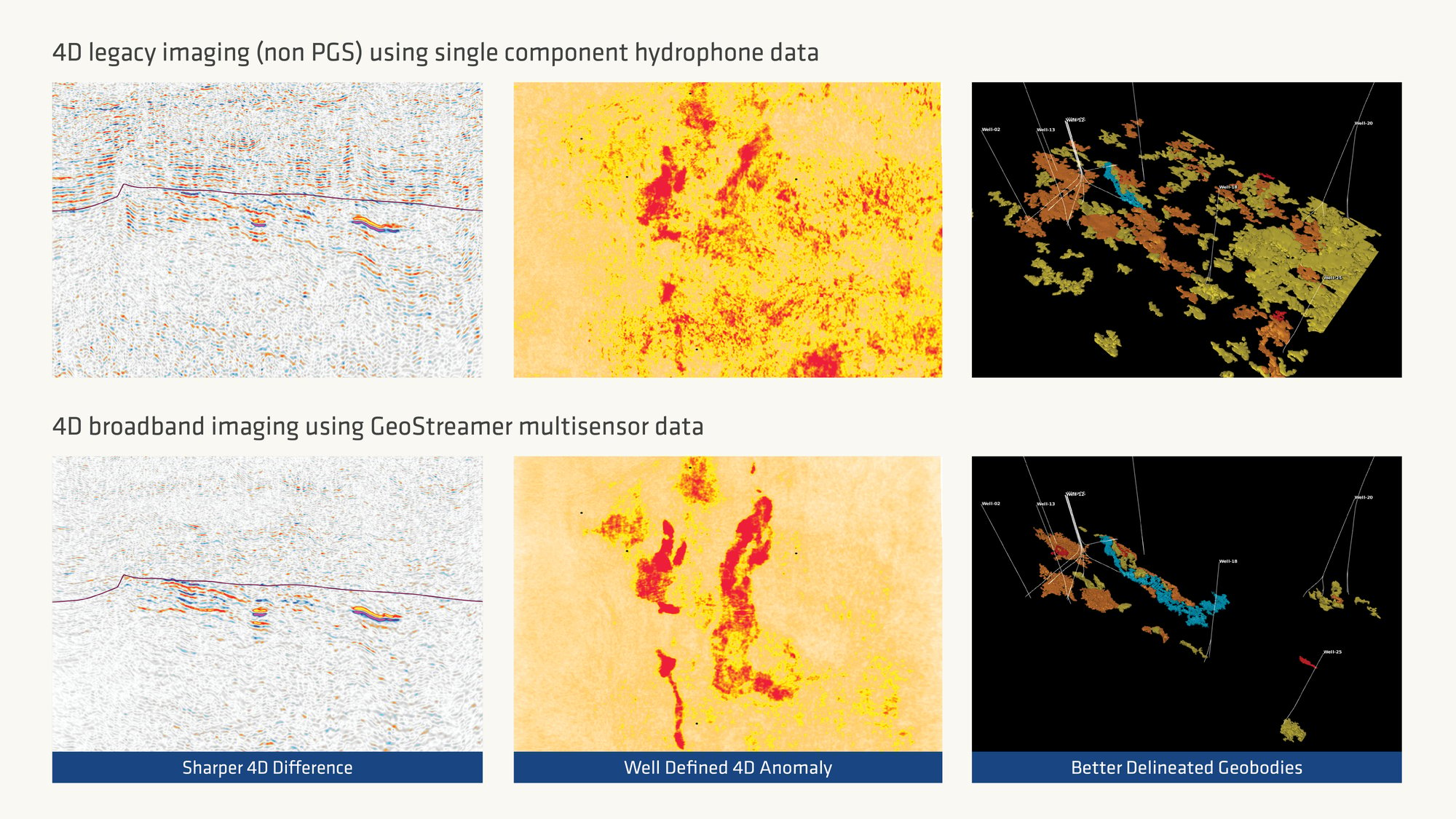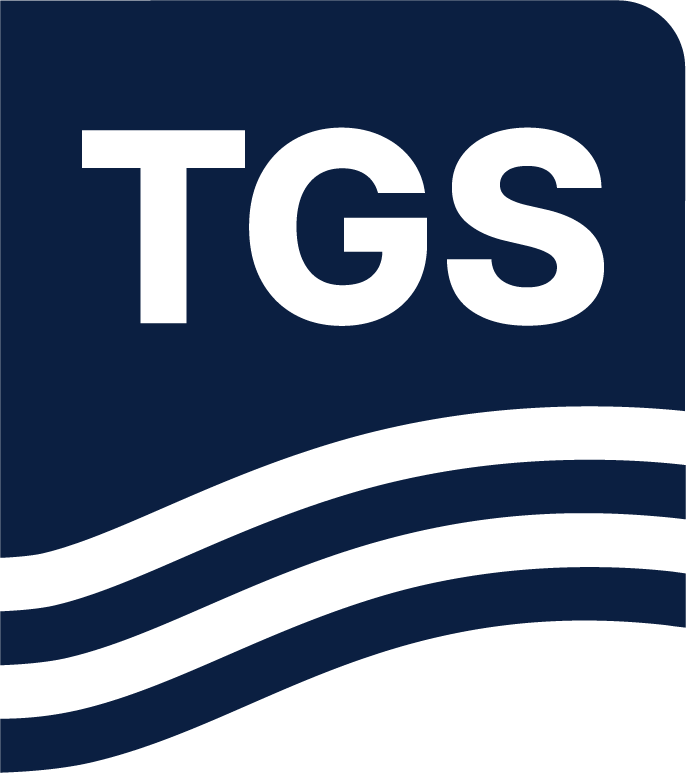4D Survey Design
Advantages of 4D Surveys

Optimizing 4D Acquisition Geometry for Subtle Reservoir Changes
If all source and receiver positions are close to equal, differences in the recorded seismic wavefields due to non-repeated acquisition geometry will be negligible. Furthermore, insensitivity to local changes in receiver depth and/or sea-surface height between surveys will minimize non-repeatable time-shift differences. This is achievable with multi-sensor-on-multi-sensor 4D acquisition (see data comparison).
4D processing and characterization provide the best chance of extracting high-fidelity 4D seismic signals that can resolve subtle changes in reservoir saturation and pressure, and fluid movements can be accurately understood.
4D Processing and Imaging
TGS offers an integrated approach to 4D seismic surveying, from acquisition planning and feasibility studies to processing and reservoir production characterization. Our 4D compliant data processing and imaging technology ensures a high degree of repeatability, whatever the vintage of the surveys.
Track reservoir changes accurately, monitor fluid dynamics, optimize production and improve field management decisions with our 4D toolkit.
Calibrating Seismic Modeling with Reservoir Performance Data
An elastic seismic modeling exercise will determine preferred thresholds for errors in source and receiver position repeatability. This is typically conducted by the operators of an asset and calibrated with reservoir-simulation platforms to history matching of measured well performance. The technical specifications of the available acquisition platforms will also guide the modeling of acquisition parameter sensitivity vs. the ability to detect very small changes in seismic wavelet amplitude phase and/or timing.
In practice, the use of dense streamer spreads (e.g. 50 m streamer spacing) with additional overlap streamers used to contribute data when streamer feathering creates holes in offset classes (see illustration), is recommended to optimize the data available for 4D binning and data matching. When available, both source and receiver steering will minimize errors in positioning and repeatability (see real crossline error plot).
Let’s Discuss Your Acquisition Needs
With the industry’s most diverse fleet and integrated expertise, from survey design and acquisition to seismic data imaging, TGS delivers trusted, tailored solutions for complex exploration challenges.
Learn More About Our Fleet
Discover the capabilities, configurations and proven performance of our diverse fleet. Built for reliability and efficiency, our vessels are ready to meet your exploration needs, anywhere in the world.
Start the Conversation
Every project is different. Talk to a TGS expert about your specific acquisition requirements. With decades of trusted experience and integrated capabilities, we’ll help you design the right solution from the start.





